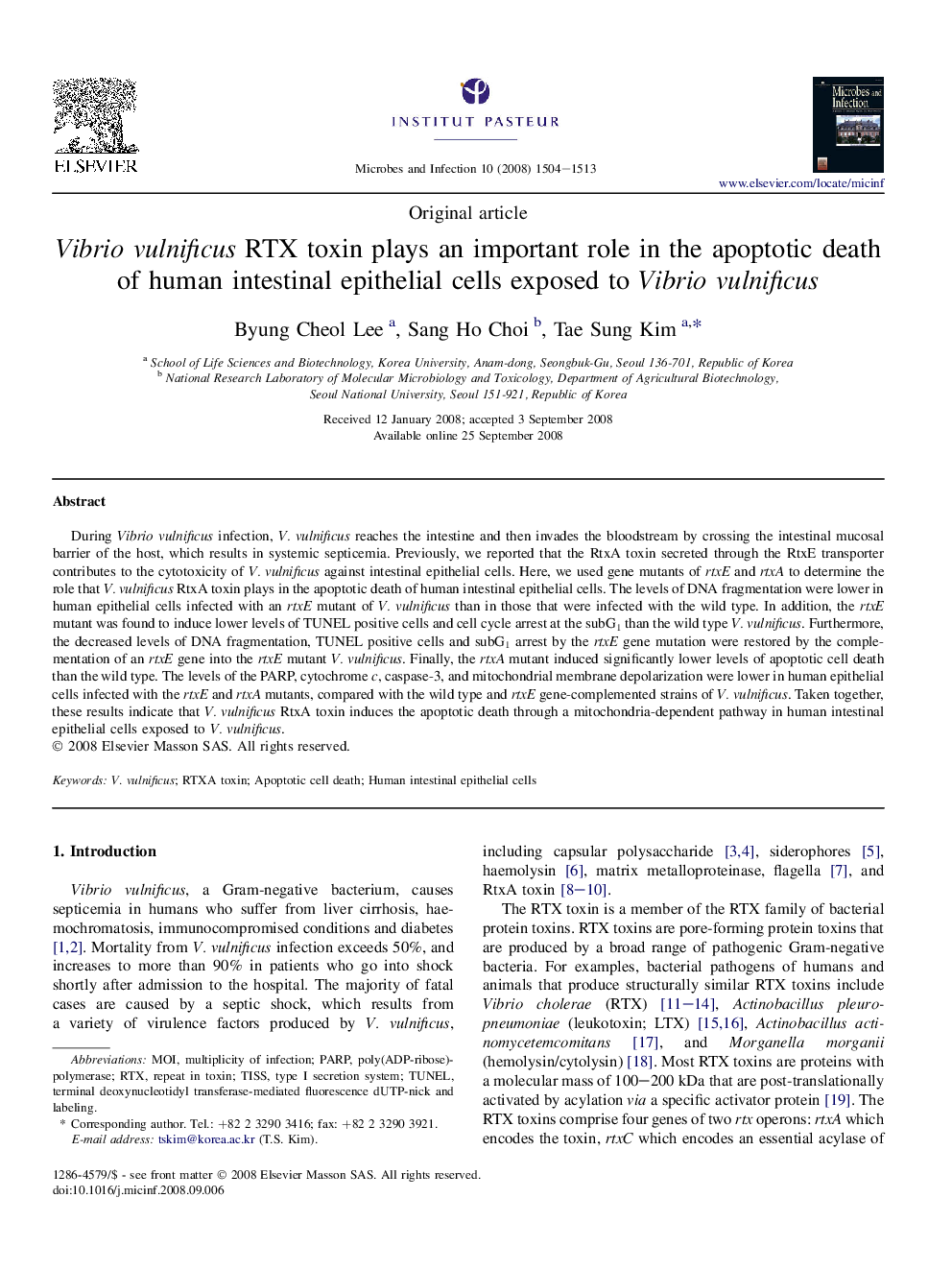| Article ID | Journal | Published Year | Pages | File Type |
|---|---|---|---|---|
| 3415235 | Microbes and Infection | 2008 | 10 Pages |
During Vibrio vulnificus infection, V. vulnificus reaches the intestine and then invades the bloodstream by crossing the intestinal mucosal barrier of the host, which results in systemic septicemia. Previously, we reported that the RtxA toxin secreted through the RtxE transporter contributes to the cytotoxicity of V. vulnificus against intestinal epithelial cells. Here, we used gene mutants of rtxE and rtxA to determine the role that V. vulnificus RtxA toxin plays in the apoptotic death of human intestinal epithelial cells. The levels of DNA fragmentation were lower in human epithelial cells infected with an rtxE mutant of V. vulnificus than in those that were infected with the wild type. In addition, the rtxE mutant was found to induce lower levels of TUNEL positive cells and cell cycle arrest at the subG1 than the wild type V. vulnificus. Furthermore, the decreased levels of DNA fragmentation, TUNEL positive cells and subG1 arrest by the rtxE gene mutation were restored by the complementation of an rtxE gene into the rtxE mutant V. vulnificus. Finally, the rtxA mutant induced significantly lower levels of apoptotic cell death than the wild type. The levels of the PARP, cytochrome c, caspase-3, and mitochondrial membrane depolarization were lower in human epithelial cells infected with the rtxE and rtxA mutants, compared with the wild type and rtxE gene-complemented strains of V. vulnificus. Taken together, these results indicate that V. vulnificus RtxA toxin induces the apoptotic death through a mitochondria-dependent pathway in human intestinal epithelial cells exposed to V. vulnificus.
